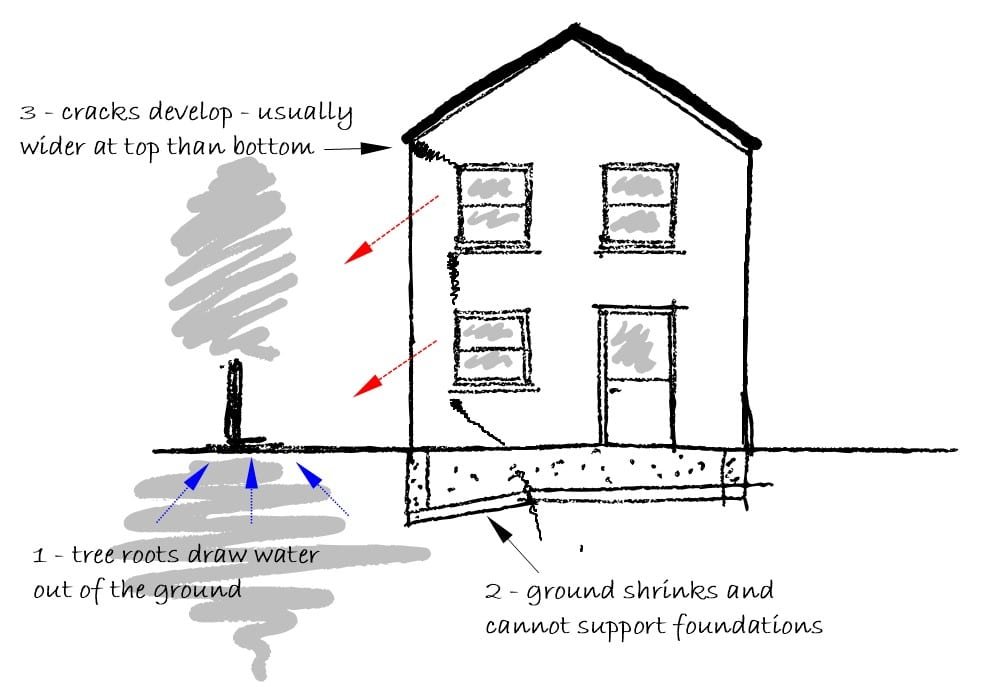Suffolk's diverse geology includes significant clay deposits that can affect property foundations through shrinkage and swelling. Understanding subsidence risks is crucial for property owners, buyers, and insurers across the county.
Understanding Subsidence in Suffolk
What is Subsidence?
Subsidence is the downward movement of a property's foundations caused by the ground beneath them moving or washing away. In Suffolk, clay shrinkage during dry periods is the most common cause.
Clay Shrinkage
Clay soils shrink in dry conditions, creating voids under foundations
Tree Root Damage
Large trees extract moisture from clay, causing localized subsidence
Water Leaks
Burst pipes can wash away supporting soil beneath foundations
Suffolk Soil Composition
High Risk Areas:
- Southern Suffolk - London Clay deposits
- Areas around Ipswich and Felixstowe
- River valley locations with alluvial clay
Lower Risk Areas:
- Coastal areas with sandy soils
- Chalk uplands in western Suffolk
- Glacial sand and gravel deposits
Identifying Subsidence Signs
External Warning Signs
- Cracks in external walls (particularly diagonal)
- Cracks around windows and doors
- Leaning or bulging walls
- Doors and windows sticking or not closing
- Rippling in wallpaper or cracked plaster
Internal Warning Signs
- Cracks appearing in internal walls
- Gaps around window and door frames
- Uneven or sagging floors
- Doors and windows becoming misaligned
- Cracked or loose tiles
Professional Subsidence Assessment
RICS Structural Survey Assessment
Our RICS chartered surveyors use specialized techniques to assess subsidence risk and identify active ground movement affecting Suffolk properties.
Survey Techniques:
- Crack monitoring and measurement
- Level surveys to detect movement
- Soil and foundation assessment
- Tree and vegetation impact analysis
Report Contents:
- Detailed damage assessment
- Cause identification and analysis
- Monitoring recommendations
- Repair strategy and cost estimates
Prevention and Remediation
Prevention Strategies
Tree Management
- • Regular pruning and crown reduction
- • Root barrier installation
- • Appropriate species selection
- • Maintain safe distances from property
Drainage Maintenance
- • Regular gutter cleaning
- • Downpipe and drain inspection
- • Surface water management
- • Leak detection and repair
Soil Moisture Control
- • Consistent watering during dry periods
- • Soakaway installation
- • Ground cover to prevent evaporation
- • Avoid overwatering clay soils
Remediation Options
Minor Repairs:
- • Crack filling and repointing
- • Window and door adjustments
- • Cosmetic internal repairs
- • Improved drainage installation
Major Structural Work:
- • Underpinning foundations
- • Structural wall reinforcement
- • Ground stabilization techniques
- • Complete foundation replacement
Subsidence Insurance in Suffolk
Insurance Implications
Subsidence claims can significantly impact property insurance and value. Understanding the insurance process is crucial for Suffolk property owners.
Key Considerations:
- • Most policies have high subsidence excess (£1,000+)
- • Claims require professional structural engineer reports
- • Monitoring periods may be required before repairs
- • Previous claims affect future insurance availability
Professional Support:
- • RICS surveys provide credible evidence
- • Expert witness services for disputes
- • Repair specification and supervision
- • Insurance company liaison support
Concerned About Subsidence?
Get professional subsidence assessment from Suffolk's leading RICS chartered surveyors. Early detection and expert advice protect your property investment.
